China and India today are two of the most populous countries on Earth with a combined population of more than two billion people. In a planet where people live in more than 200 countries and scattered across six continents, the two Asian giants account for more than a third of Earth’s 7 billion humans. But this is not an exclusively contemporary statistics since China and India (or areas which now make up the two nations) have always been inhabited by more people than any other places in the world throughout their history.
The most palpable evidence for this is the huge number of Chinese and Indian diaspora across the globe, those who left their homelands in search for better opportunities overseas and also the descendants of those pioneers.
Southeast Asia is no exception. Strategically located on the land and sea trade routes between China and India, the region is a natural crossroads of peoples from the two nations. Traces of Chinese and Indian influences are engraved in many aspects of Southeast Asian cultures and heritage, from ancient temples to hearty dishes served at homes in the region.
Singapore, a tiny island sitting right across continental Asia’s southeastern end, has long been benefiting from the lucrative sea trade route connecting the two powerhouses, and later the spice islands with Middle East and Europe. Naturally the thriving trade port attracted merchants from foreign lands trying to get a fraction of the wealth generated by the booming economy.
Generations after generations, Chinese and Indian merchants came and left, but some chose to stay at their new land, their new home. Intermarriage with the locals was inevitable, and what started as simply a union between two adult people would eventually leave profound impact to local cultures across the archipelago.
The Peranakans, as they are usually referred as, are the progeny of foreign men who married Southeast Asian local women, typically. Chinese Peranakans make up the largest portion of Peranakan communities in the region, tracing back their ancestral lines mostly to Hokkien people from southern China. But less known to most foreigners are other Peranakan communities, including Indian Hindu Peranakans (also known as Chitty), Indian Muslim Peranakans (Jawi Pekan) and Eurasian Peranakans.
Being the largest group of all Peranakan communities in Southeast Asia, the Chinese Peranakans not only blended Chinese culture with that of Malay and Indonesian people, but also created an entirely new cultural landscape resonating across the region. From architecture to jewelry to food, no aspect was left untouched by the newly established cultural fusion.
Joo Chiat in Singapore is an example of a neighborhood where richly adorned Peranakan houses occupy many of its narrow streets. Painted in pastel colors and decorated with European, Chinese and Malay elements, Joo Chiat’s shophouses are a testament to the community’s embrace for the cultural fusion. It is also one of the places to go in the country to taste authentic Peranakan dishes, known for their distinctive rich flavor for the plentiful use of spices and ingredients not found in China.
The most famous and lovable Peranakan cuisine is probably laksa, with different variants hailing from Singapore, Malacca, Penang and Sarawak to name some. Made from coconut milk, chicken broth, prawns, clams, hard-boiled eggs, bean sprouts, tofu, rice noodles and a generous amount of spices including candlenuts, shrimp paste, coriander, galangal, turmeric and lemongrass, Singapore’s Katong laksa is such a hearty dish which will only make people ask for more.
Another interesting – yet potentially divisive – Peranakan dish is ayam buah keluak. Made from chicken, spices and most importantly keluak – the nut from Pangium edule tree which is lethal if eaten raw – the dish looks typical Malay/Indonesian dish where taste, not appearance, is of the utmost importance. Keluak is widely used in East Javanese cuisine, most notably rawon, to infuse the dark soup with an earthy, nutty taste. It is an ingredient not known in China or India and never used in any of the dishes from the two countries. But ayam buah keluak is a perfect example of Peranakans’ take on the spices and herbs from their new lands, incorporated with their ancestors’ old recipes. An acquired taste created by the people who chose to stay.
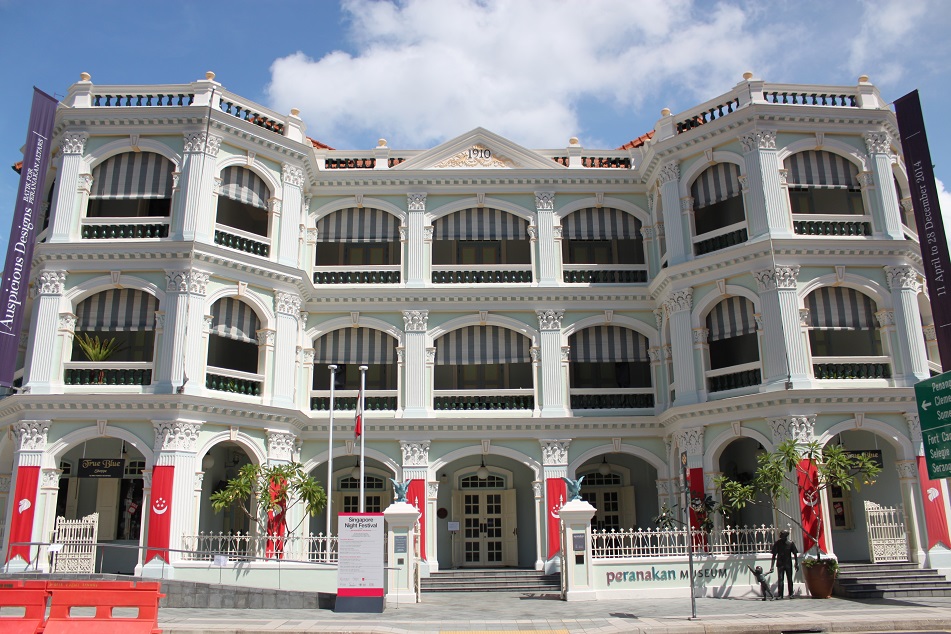
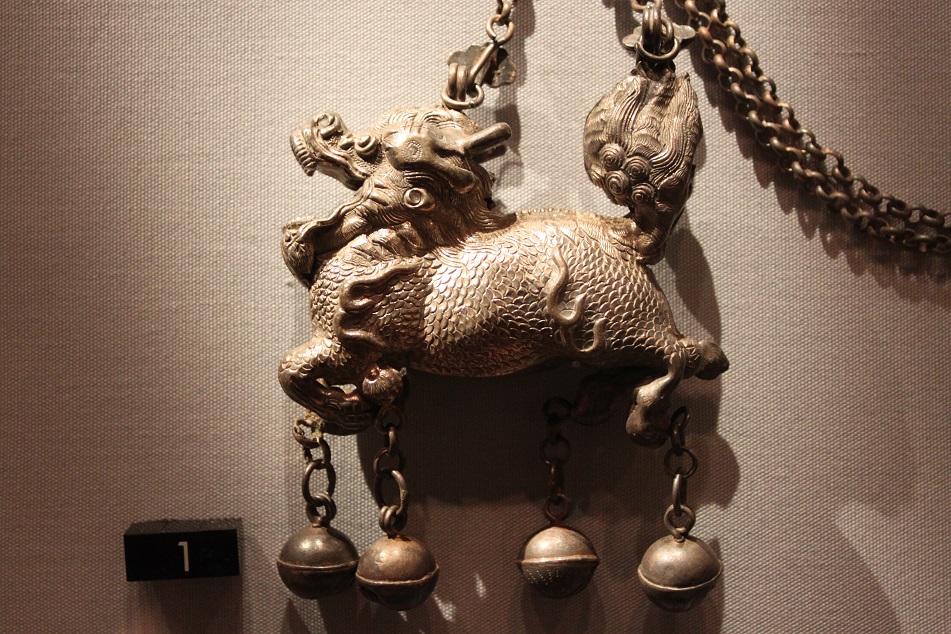

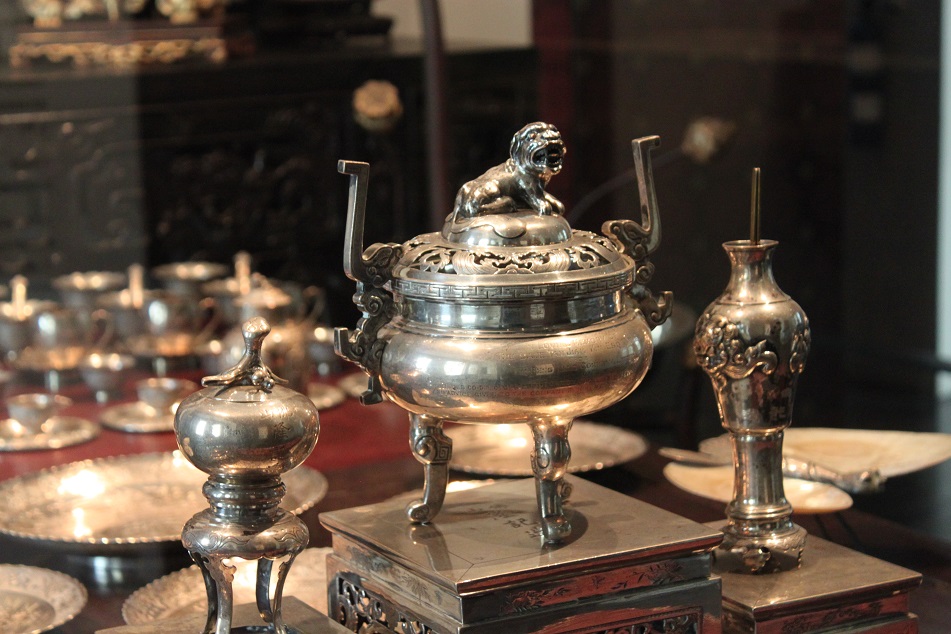
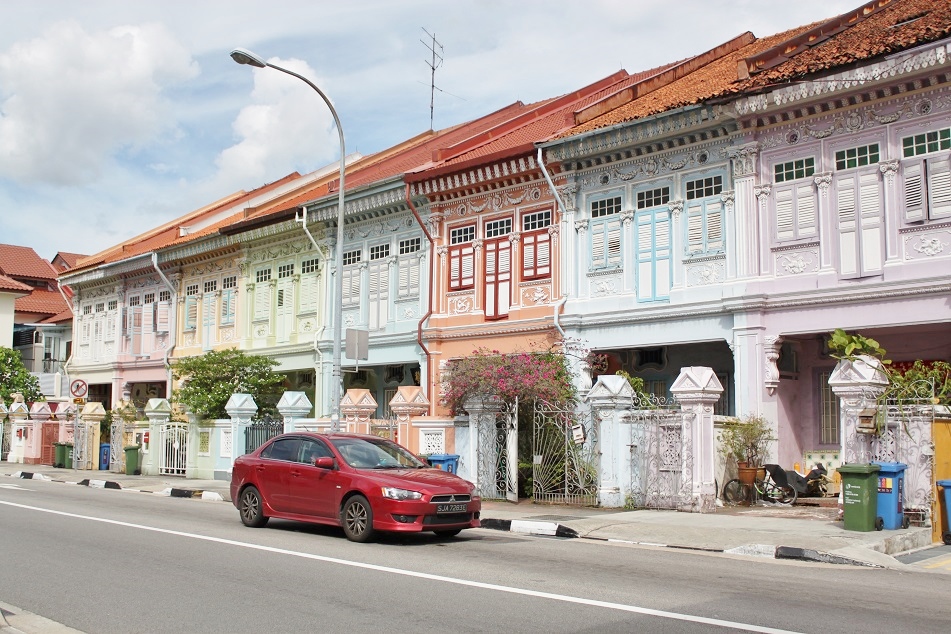
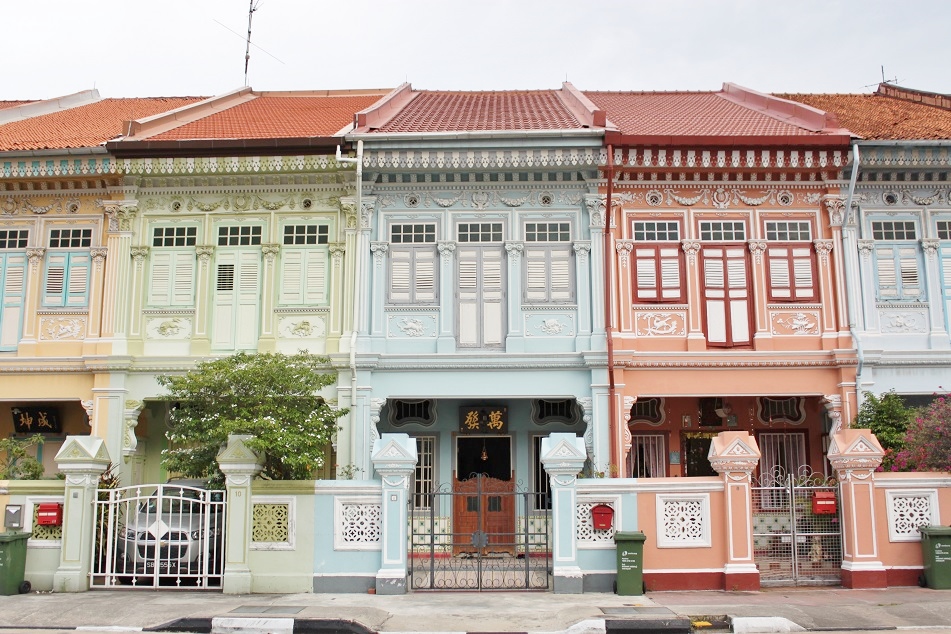

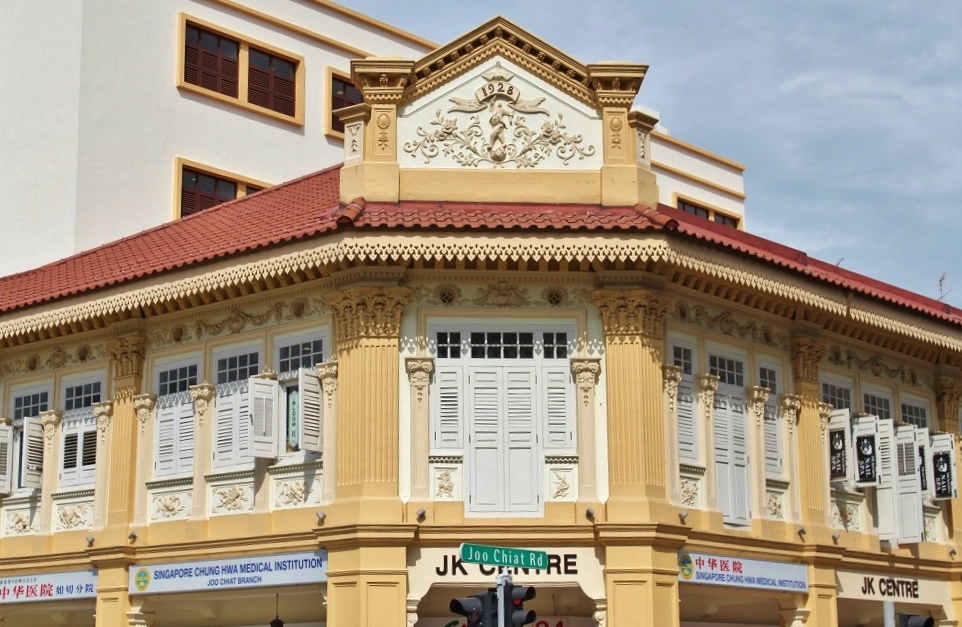




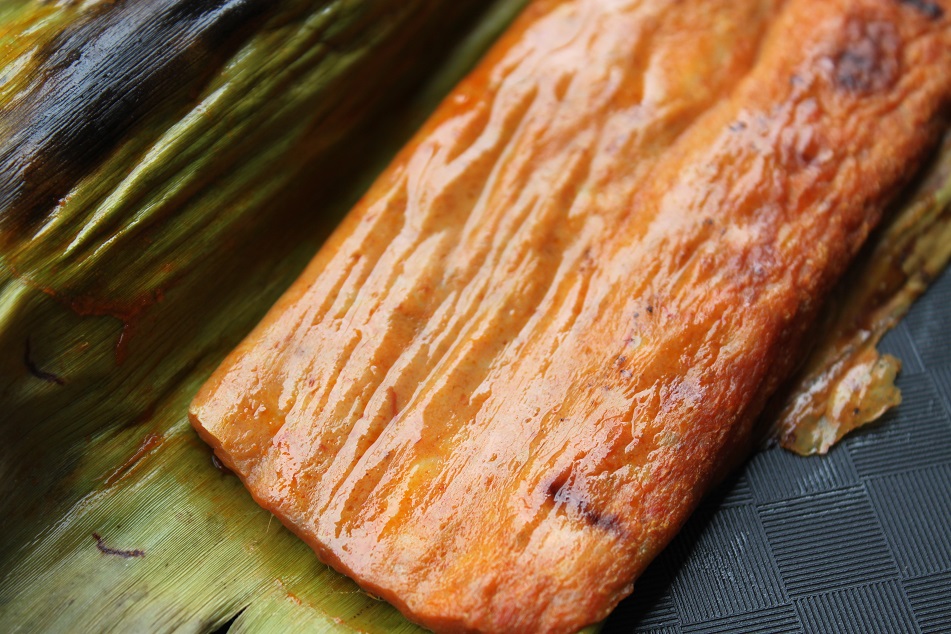
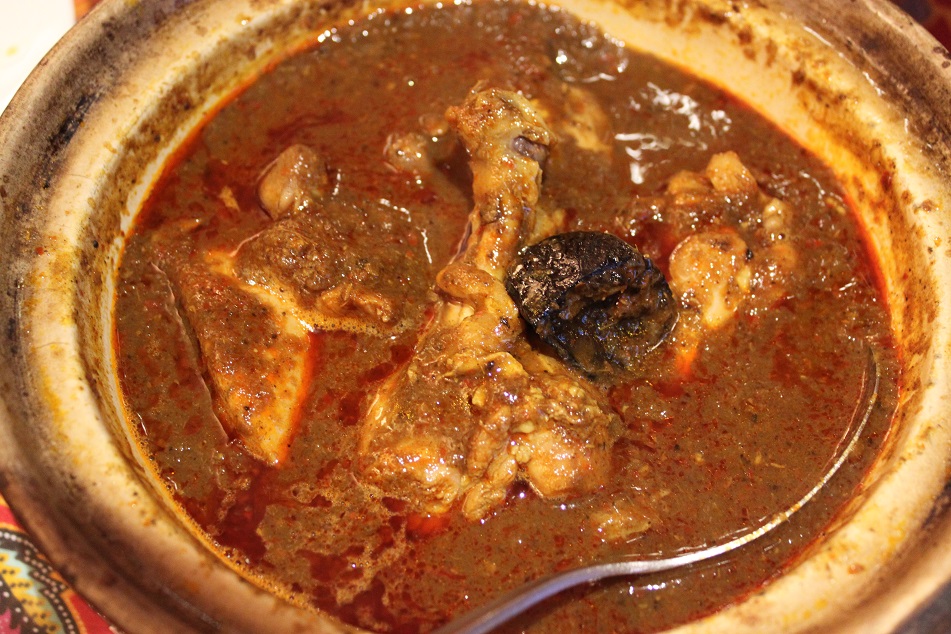


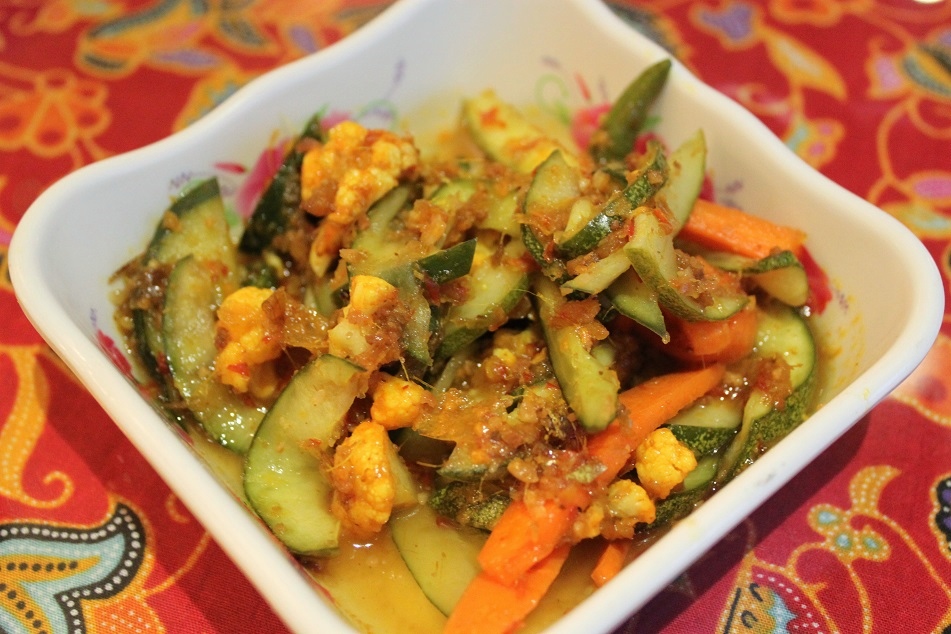
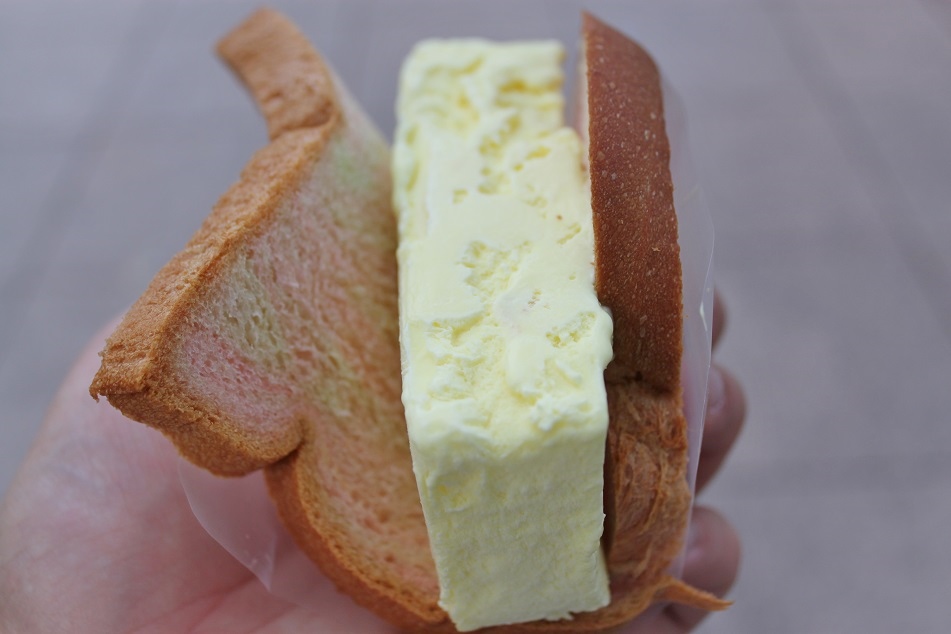
Love the colourful shop fronts.
LikeLike
Those colorful shophouses were the highlight of Joo Chiat, a mixed neighborhood where I stayed at. Thanks for dropping by, Ruth.
LikeLike
Very nice one from you
LikeLike
Thank you for your comment, Rajiv. I’m glad you enjoyed this post.
LikeLike
Nice shots, Bama! Discovering more about the Peranakans was a real highlight of our stay in Singapore. I wish I made the effort to take photos inside the museum – it was just so fascinating and we probably spent a good two hours there! As for the food, I wouldn’t mind having that Katong laksa every day…
LikeLike
Thank you, James. Learning about the Peranakans brought some sort of enlightenment to me since I actually grew up eating Indonesian Peranakan dishes. They really had influenced many aspects of Southeast Asian cultures, but a lot of people don’t realize that fact. I noticed that the museum collections really captivated you. 🙂 Oh and Katong laksa, I would go to Singapore just to have that again!
LikeLike
Beautiful pictures. Your food photos make me want to try them even though my I’m not really into curries.
LikeLike
Thank you, Anne. You might like Katong laksa since its rich broth is not overpowering while the shrimps and clams give the dish sweet and fresh flavor.
LikeLike
Wonderful photos and narrative Bama. Can you tell me what Uncle Ice Cream is?
LikeLike
Thank you, Sue. Uncle Ice Cream is basically a thick block of ice cream served with soft bread. It is called that way since most of its vendors are old Chinese men whose nickname ‘uncle’ were given by the locals. Apart from the usual flavors, they have some other flavors Asians are familiar with, such as durian and yam.
LikeLiked by 1 person
Thank you Bama. I love the reason for the dish being called Uncle. Yam ice cream. Well know that seems to go better with the bread!
LikeLike
My pleasure, Sue. I really like yam ice cream, not only because of its appealing color, but also its creamy flavor. As for the bread, I always go with pandan bread whenever possible. 🙂
LikeLike
Bama I have never seen ice cream served with bread, let alone a choice of what type of bread. Thank you for sharing with me. 🙂
LikeLike
You must try it, Sue. That’s one of the reasons why we travel, right? To try new things and dishes. 🙂
LikeLiked by 1 person
Absolutely! I see the food quiz post already! 🙂
LikeLike
Good post and good pics. Thanks!
LikeLike
Thank you! I’m glad you enjoyed the story and photos.
LikeLike
A fascinating post and the first I’ve read about the Peranakans….it truly is a rich and campur history… thanks again I love yr history inputs…. Trees
LikeLike
Campur, that’s the right word to describe their legacy. I was, too, fascinated by the history of the Peranakans and when I visited the museum I realized that I was actually quite familiar with Peranakan cultures, particularly the ones in Indonesia. Thank you, Trees!
LikeLike
Hi Bama, what an impressive, in depth narratives about the Peranakans! What an amazing cultural fusion they have created. I don’t know where to start but I’m i awe of the arts, the architecture and, of course the food. I guess they have left a great deal of influence throughout Southeast Asia but a lot of people didn’t realize it. I have to keep in mind the dishes you mentioned next time I’m in Singapore. I actually had to skip your post earlier because I was hungry and I couldn’t stand looking at those photos. Lovely shots as always, specially the food.
LikeLike
Marisol, thank you for your lovely comment. Apart from the Peranakan communities in Singapore, Malaysia and Indonesia, I believe their counterparts in the Philippines also left such rich cultural heritage many people might not realize. Chilli Padi, the Peranakan restaurant I went to in Joo Chiat was particularly quite popular for its wide array of authentic Peranakan dishes.
I guess by now you’ve already finished you dinner. Sorry for the food photos! 🙂
LikeLike
that colorful street reminds me of Charleston , SC too! http://en.wikipedia.org/wiki/Rainbow_Row
also, i am fascinated about the cooking method to make the keluak not harmful? can you tell me more? wonderful article!
LikeLike
Oh you’re right! I guess we all find amusement in adding different colors to our houses’ walls. Although in some places uniformity is the norm.
There are some explanations on how to prepare the keluak. But the most common one involves a two-step process: boiling the raw fruit and burying it in ash, banana leaves and earth until it changes color.
Thank you for your kind words!
LikeLike
Nice article as always 🙂
Anyway Bama, there are so many tenants of uncle’s ice cream in Jakarta. Hahaha..
LikeLike
Thank you, Wien. I do realize that too, but somehow I haven’t found any with a flavor closest to the ones in Singapore.
LikeLike
The pleasure’s been all mine. Hardly to say yes but I found one that tasted similar to the ones in Singapore. It’s located in Harco Mangga Dua with the similar name too: “Uncle’s ice cream”. Haha. Anyway, is the article located in Singapore? Looks like Penang.
LikeLike
Ah I see. There are a lot of good food at Mangga Dua in general. 🙂 It is Singapore, not Penang. And I’ve never been to Penang. 🙂
LikeLike
Thanks for the explanation, Bama 🙂
LikeLike
Just wow!
LikeLike
Thanks! There are more to see in Singapore than just shopping centers, really. 🙂
LikeLike
Amazing pictures.
LikeLike
Thank you! Glad to know you enjoyed this post.
LikeLike
First – been a while since I last dropped by on your blog. I like the new header!
Good to see S’pore from another point of view.
I love the cute little shops!
LikeLike
Hi Sila! It’s been forever since you were here the last time. I still remember your Dieng post years later I still haven’t got the chance to visit it. Ha! 🙂
There are always things to see beyond the usual places that we’re all so familiar with. Thanks!
LikeLike
Great information and history Bama. Thank you for sharing this!
LikeLike
And thank you for reading, Indah! I really need to learn photography from you. 🙂
LikeLike
Great pictures 🙂
LikeLike
Thank you for your kind words!
LikeLike
Bama, a popular vernacular joke refers to the presence of Indians and Chinese on the moon long before Armstrong set foot there 🙂
I doubt I have read a better account of the cultural history of Singapore. Peranakan cuisine looks and sounds amazing. James and you have pushed Singapore significantly higher on my list 🙂
LikeLike
Haha, that’s kind of true, isn’t it? 🙂 Probably Chinese and Indian communities can be found in almost every corner of the world.
Madhu, that’s really kind of you to say. Thank you! When it comes to food, Indonesian Peranakan dishes have now become staples for the people throughout the nation. From street food to fancy cuisine, now I realize how profound their legacies have intertwined with Indonesian native food. Singapore is indeed a nice stop should you explore this part of of the world one day.
LikeLike
Amazing photos and the story mas Bama. As always! Just waiting for your photos and how you describe Mecca and Medina. Hahahaha hope it will be on your another destination list 🙂
LikeLike
Thank you, Agil. Amin! Iya itu sih udah ada niatan, tapi belum tau kapan realisasinya. 🙂
LikeLike
Absolutely fascinating history ~ so happy to have learned about this, and could not agree more that Chinese and Indian influences are found everywhere around the globe (and such a strong and significant presence), but in SE Asia perhaps is their influence felt the most. Wonderful photos to go along with your wonderful words…
LikeLike
I was, too, deeply fascinated by their influence particularly in Southeast Asian cultures. China and India were both where some of the world’s oldest and most intriguing civilizations and empires flourished anyway, so their rich heritage is palpable across the globe even today. Thank you very much, Randall!
LikeLike
The history of India, China and Persian history is incredible, back when the rest of the world was tribal they flourished and set the scene for where the world is today. Fascinating stuff…
LikeLike
Ah yes, Persian culture and history have been so captivating since I learned about them years ago. Persepolis is one of the places I want to visit the most in the world.
LikeLike
Me too, I had hoped to travel to Iran in ’15, but may have to wait another year…
LikeLike
Go before it opens up to the western world. 🙂 I heard that people who went to Myanmar recently saw dramatic changes in the country. Iran might experience the same thing.
LikeLike
I agree, to see it now along with talking with the people would give insight that will change down the road. Could not agree more. I think I will shoot for end of ’15. Thanks for push 🙂
LikeLike
My pleasure! Your readers can expect some great photographs from you in a year’s time, or a little more. 🙂
LikeLike
What a nice museum. 😀
Nice blog!
Cheers from Hawaii Hotel
LikeLike
wow! ur article is awesome, its very detailed and really amaze me how Indian and Chinese is around us everywhere. 🙂
LikeLike
Hi Shabrina. Thank you for dropping by! As one blogger mentioned that Indians and Chinese had set foot on the moon long before Neil Armstrong made that historic step. 🙂
LikeLike
Peranakan, i knew that word firstly when i read Bumi Manusia 😀
LikeLike
Wow Ester, you’re a serious reader! Not everyone reads that book. 🙂
LikeLike
hahahaaaa.. eeeiihhh.. it‘s not merely true. yes i did read that book, but bcz it s a compulsory book to be disscussed at Bahasa Indonesia subject :p
even we had a mini theater in the end of the semester for its story.
guest who did i act to be…?! 😀
LikeLike
Well, I haven’t read the book so I have no clue on the characters. Anyway, I’m still impressed. 🙂
LikeLike
This post is great! Sometimes it takes the story of a rich culture to remind us how full of life our lives can be! Also- I now have a great desire to visit Joo Chiat, and have a hankering for several foods I can’t pronounce. Good job sir! Also- your pics are great! What camera do you use?!
LikeLike
And that is exactly the reason why I travel and share the stories on my blog: to remind people how full of life our lives can be. Thank you for such a thoughtful comment! I use a Canon EOS 500D, also known as Rebel T1i.
LikeLike
These pictures are absolutely amazing! I love seeming how all the different cultures of the world have blended together. Every country and person is so interconnected and it is fascinating to learn about the ways that this changes everything from our food to our architecture.
LikeLike
Thank you! Learning how different cultures mixed and created such unique cultural fusion makes us think why, of all the similarities we share, the world can’t live in peace. But as bloggers we have the privilege to convey this message to others, don’t we?
LikeLike
Pingback: The Red Dot: A Matter of Being Too Perfect | What an Amazing World!
Pingback: Zheng He and the Treasure Voyages | What an Amazing World!
Pingback: Malacca: The Gateway to East Asia | What an Amazing World!
Pingback: Penang and the Chinese Diaspora in Southeast Asia | What an Amazing World!
Pingback: The Chinese Connection | What an Amazing World!
Pingback: Vestiges of Semarang’s Ethnic Quarters | What an Amazing World!